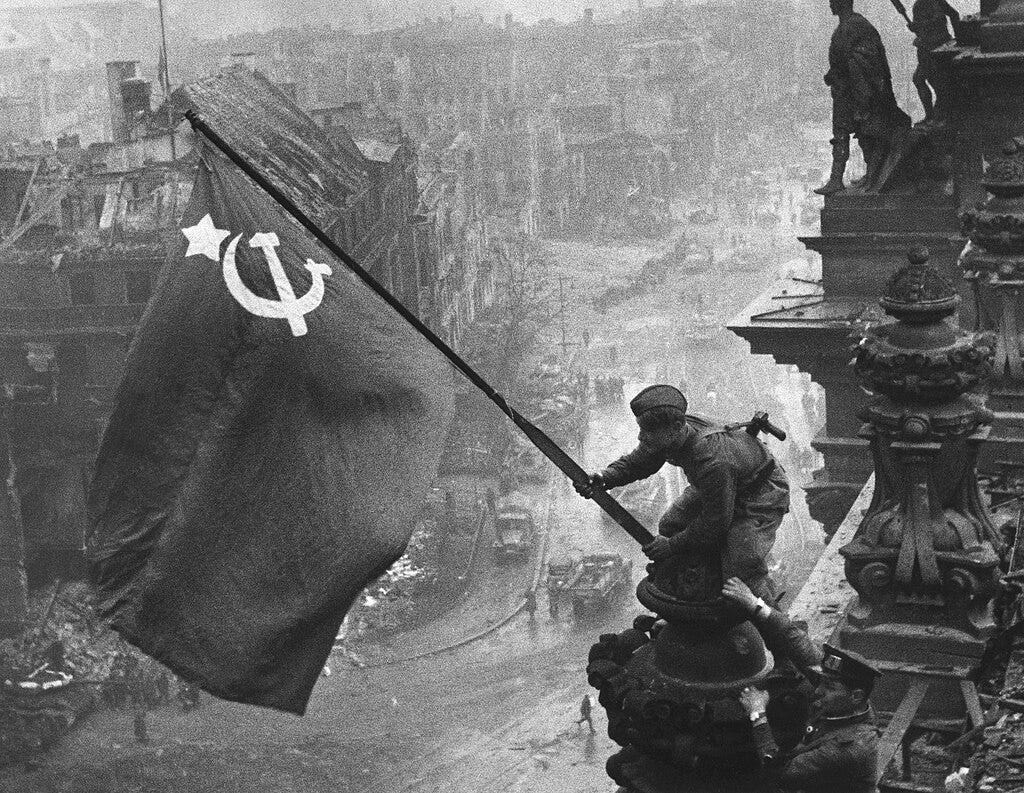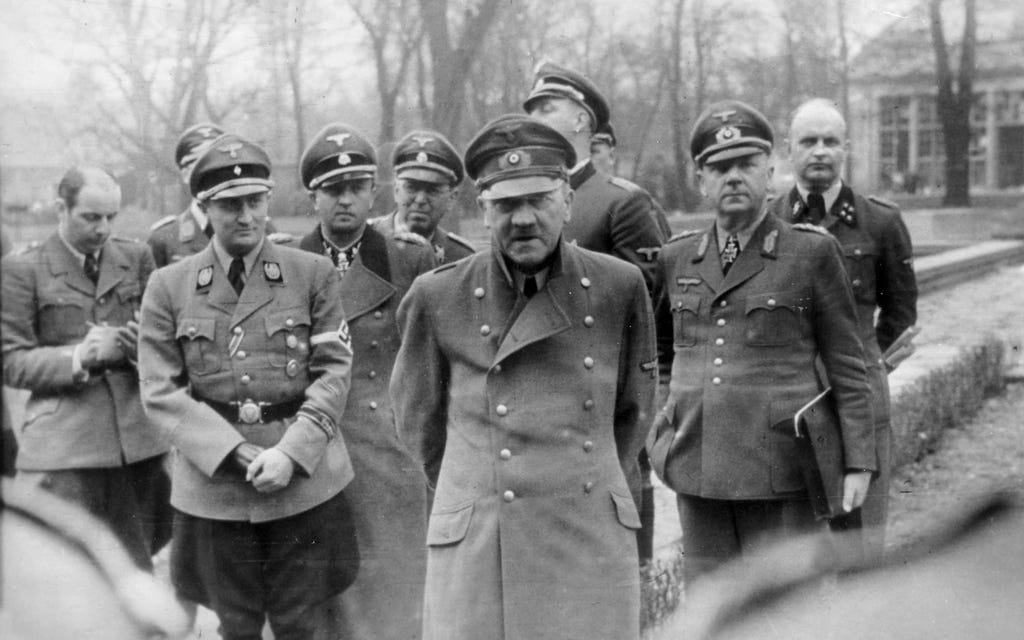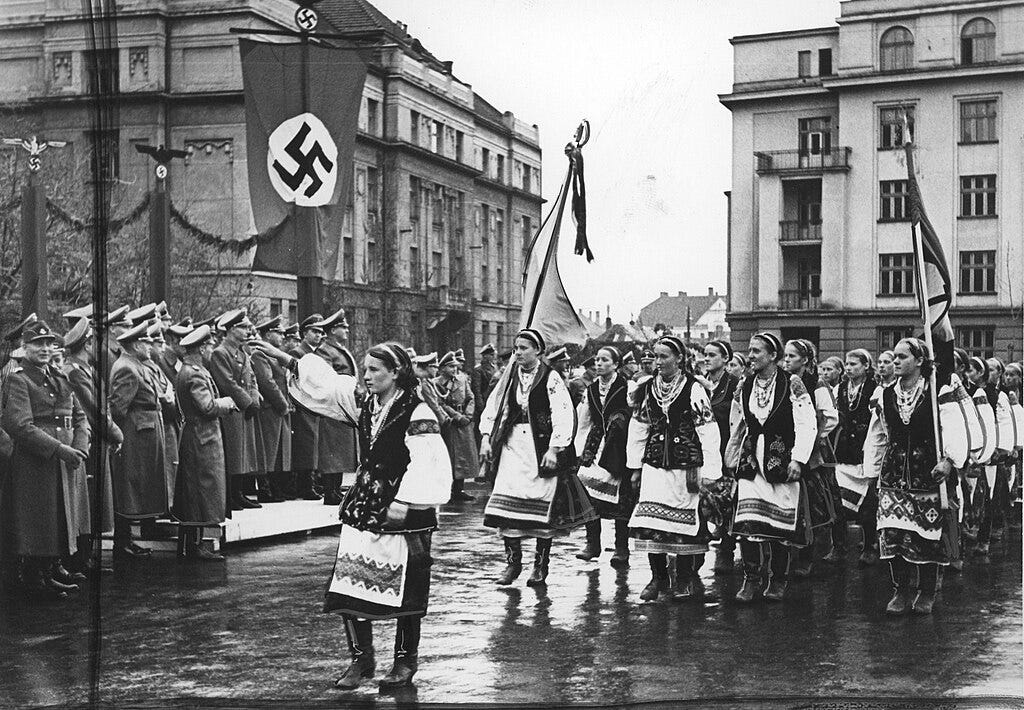Nazism and Communism: the Controversial Equivalence of the EU Parliament
The Eurochamber Wants to Rewrite the Course of History

On January 23, 2025, in Strasbourg, the EU Parliament adopted a resolution condemning the use of misinformation and the over-glorification of WWII’s victory to justify Russia’s military operation in Ukraine.
The Eurochamber accused Russia of carrying out an “idolatry of victory,” using May 9th—Victory Day—as a propaganda tool to mobilize and manipulate its people into supporting an illegal aggression against Ukraine. Russia is accused of exploiting the “rhetoric of the liberation of Europe from Nazism” to impose its imperialistic hegemony on Ukraine, which is an independent and sovereign state.
Furthermore, the EU Parliament called for the ban of Nazi symbols, the hammer and sickle, and all icons representing Russia’s invasion of Ukraine. This clearly signals an intention to equate Nazism and Soviet Communism, drawing a parallel between the two totalitarianisms, based on the fact that the two nations had signed the Molotov-Ribbentrop Pact to avoid mutual aggression—a pact that ultimately led to the outbreak of WWII.
This is not the first time the EU Parliament has taken this position. Even before the Russian-Ukrainian conflict, a similar resolution was adopted in 2019.
We have always been told that democracy is the best governing system and that dictatorships are inherently malicious. However, are we sure that equating Nazism and Communism is a justifiable stance?
The Reasons for the Controversy 🤔

Nazism was an ideology that terrorized Europe and the entire world. It emerged from the resentment of the German people, who never accepted the harsh conditions imposed after WWI. In the 1920s, the German army was downsized, and its economy suffered from severe inflation. Adolf Hitler identified the Jewish community as the scapegoat for Germany’s misfortunes. After Hitler’s rise to power, a sense of revenge galvanized the Germans, who followed him as their leader. Hitler annexed Austria and the Sudetenland to the German Reich before triggering WWII by invading Poland, in direct violation of the Molotov-Ribbentrop Pact.
Hitler also enacted racial laws, aiming to exclude Jews from the public sector and civil society, forcing them into isolated ghettos. These laws were also enforced in Italy under Fascist rule. When WWII began, the initial Nazi plan was to deport all Jews to Madagascar. However, when the U.S. entered the war, the Nazis feared they might lose. This led to the Wannsee Conference in January 1942, where they formalized the "Final Solution": the extermination of Jews in concentration camps.
Different Reactions 🌍

The decision sparked various reactions among Italian MEPs:
The Democratic Party MEPs abstained, stating that "it is not possible to change history through decisions taken by majority vote."
The Lega refrained from voting, rejecting the comparison.
The Five Star Movement and the Greens & Left Alliance voted against the resolution, opposing the equivalence.
Brothers of Italy and Forza Italia voted in favor, arguing that both totalitarian regimes and their symbols must be condemned.
In the rest of Europe, the debate had already been ignited when Lefteris Nikolaou-Alavanos, a Greek MEP from the Greek Communist Party, condemned the intensification of anti-communist laws in Poland back in 2022.
The Polish government revised its criminal code, imposing up to three years in prison for anyone who publicly promotes, sells, or spreads communist symbols and ideas. Even handling a book, a poster, or a pamphlet could result in imprisonment.
Nikolaou-Alavanos raised awareness about the fact that, while communist symbols were being banned in Poland and other Eastern European countries, Nazi collaborators like Stepan Bandera were being rehabilitated in the context of the Russia-Ukraine war. According to him, "The right to free political expression and ideological debate was seriously undermined."
Critical Analysis 🔍

In the 1930s, Nazism spread a dangerous agenda of death, racial supremacy, and antisemitism, culminating in WWII. The Nazis committed heinous crimes, carrying out raids against Jews across Europe. They seized Jewish assets, and targeted Roma, disabled individuals, and Slavic people for extermination in concentration camps. Their goal was to create a "perfect race" and place Europe under their rule, considering all non-Germans as inferior. Gruesome experiments were conducted under SS doctor Josef Mengele. In Auschwitz-Birkenau, 3,000 Jewish children were selected for Mengele’s experiments—only 200 survived.
Under Soviet Communism, several crimes were committed under Stalin’s rule. Millions of dissidents were executed, and prominent political opponents, like Leon Trotsky, were assassinated. However, Soviet Communism’s ultimate goal was to create an egalitarian society with no social classes. The USSR introduced the eight-hour workday, gender parity, universal free healthcare, and education—contributing to global progress. Even high-ranking Communist Party officials were subject to equality. During WWII, Stalin’s son was captured in battle. Hitler proposed exchanging him for a German general, but Stalin refused, knowing that accepting would undermine his credibility among Soviet citizens.
In Conclusion 🏁
The EU Parliament’s resolution, aimed at "tackling Russian disinformation to justify its aggression in Ukraine," contains several erroneous and contradictory elements:
Point 4: The Eurochamber condemns Russia for "glorifying Stalinist totalitarianism." This is inaccurate—Russia distanced itself from Stalinism after his death in 1953, and Nikita Khrushchev led a de-Stalinization campaign in the USSR.
Point 11: The resolution urges "EU citizens to critically evaluate information by questioning its origins and intentions, particularly when it pertains to narratives linked to Russia." This is contradictory—how can citizens critically evaluate Russian disinformation if Russian media outlets like Sputnik or Russia Today are banned?
Point 14: The EU Parliament calls for an "EU-wide ban on the use of both Nazi and Soviet communist symbols." Since the war began, Europe has supported Ukraine, yet Ukrainian militants have publicly displayed Nazi symbols on multiple occasions. The Azov Battalion, a branch of the Ukrainian army, incorporates Nazi symbols in its insignia.
This resolution raises legitimate concerns about historical interpretation and selective censorship, prompting further debate on the complex legacy of totalitarian regimes.





Confrontation of two totalitarian systems
Me